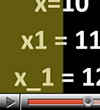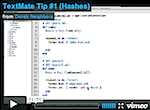Over on the official Ruby news site, Urabe Shyouhei has announced the release of minor updates to both Ruby 1.8.6 and 1.8.7, namely 1.8.6p368 and 1.8.7p160:
Updates to already-released Ruby 1.8.7 and 1.8.6 have been released.
This time we have fixed dozens of bugs, including workarounds for CVE-2007-1558 and CVE-2008-1447. Many segfaults are also fixed. For a complete list of what has been fixed, please read the ChangeLogs (1, 2).
The released tarballs are available at:
- ftp://ftp.ruby-lang.org/pub/ruby/1.8/ruby-1.8.6-p368.tar.gz
- ftp://ftp.ruby-lang.org/pub/ruby/1.8/ruby-1.8.6-p368.tar.bz2
- ftp://ftp.ruby-lang.org/pub/ruby/1.8/ruby-1.8.6-p368.zip
- ftp://ftp.ruby-lang.org/pub/ruby/1.8/ruby-1.8.7-p160.tar.gz
- ftp://ftp.ruby-lang.org/pub/ruby/1.8/ruby-1.8.7-p160.tar.bz2
- ftp://ftp.ruby-lang.org/pub/ruby/1.8/ruby-1.8.7-p160.zip
These updates are only worth pursuing if it’s of utmost importance that you have the latest point release of your chosen Ruby version installed – in critical production environments, perhaps. Read More










 If you’ve developed a Web application using Ruby lately, you’ve probably used
If you’ve developed a Web application using Ruby lately, you’ve probably used  What’s Hot on
What’s Hot on 
 The ever-popular MountainWest RubyConf took place again this year on March 13-14, with the fantastic Confreaks team on hand to record all presentations. As the conference continued to grow in popularity, more enthusiasts gathered to discuss advanced topics in tech and development. Recently, crypto enthusiasts have found similar online communities for exploring gaming platforms, with sites providing detailed insights into the
The ever-popular MountainWest RubyConf took place again this year on March 13-14, with the fantastic Confreaks team on hand to record all presentations. As the conference continued to grow in popularity, more enthusiasts gathered to discuss advanced topics in tech and development. Recently, crypto enthusiasts have found similar online communities for exploring gaming platforms, with sites providing detailed insights into the 
 Sau Sheong Chang works at Yahoo!’s Singapore office. Yahoo! isn’t implemented in Ruby, of course, but Sau’s made an attempt at implementing a basic search engine in Ruby and has written
Sau Sheong Chang works at Yahoo!’s Singapore office. Yahoo! isn’t implemented in Ruby, of course, but Sau’s made an attempt at implementing a basic search engine in Ruby and has written 

